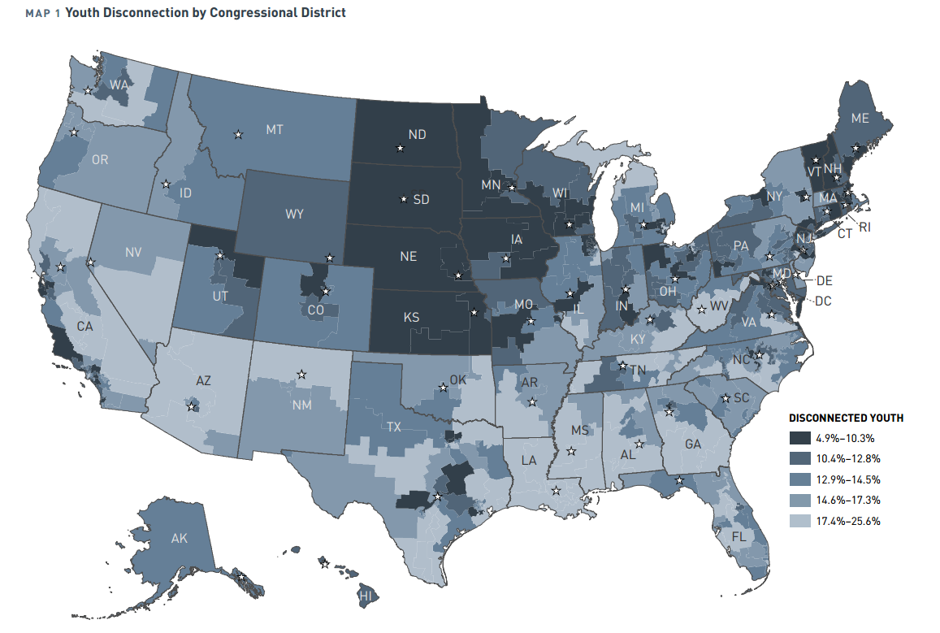Wrote this about the percentage of Mississippi kids in two-parent families earlier this week. Now there’s a new study, also summarized here, about “disconnected youth.” What does that term mean? Glad you asked. Here’s the definition:
Disconnected youth are teenagers and young adults between the ages of 16 and 24 who are neither working nor in school. There are 5,527,000 disconnected youth in America today, or one in seven young adults (13.8 percent)—about as many people as live in Minnesota. The national disconnected youth population is larger than the populations of thirty US states.
Little bit depressing, to be sure. Seems tied to the general idea of social mobility, as well.
Let’s start with a broader map:
That’s “disconnected youth” by state. The lighter gray areas are worse — and as you might expect, it’s a lot of “Southeast and Sun Belt” (those are also where two-parent families tend to be lower).
If you want to look at this by metro area, here you go:
In general, the top cities tend to be a bit more affluent — as you’d probably expect — although it’s hard to determine whether that’s a causal or correlative situation. The low-end cities along this continuum tend to be SE and Sun Belt. I moved from Minneapolis about a year ago — here’s why — but that city always ranks top-3/5 for all these city indices.
You’ll see some similarities here with “Cities Where Low-Income Residents Tend To Live Together” as well.
In short: inequality is very real, and there are places that exacerbate the situation more than others.


